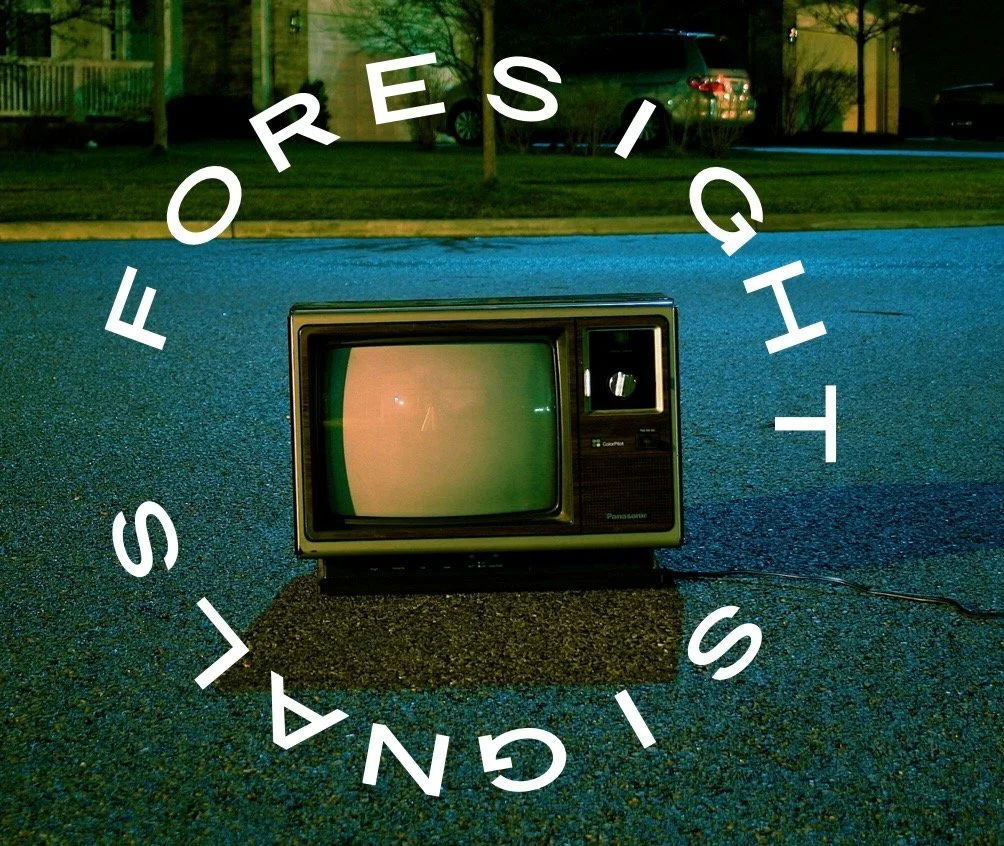You Might Be Seeing Foresight Signals Without Even Realizing It
The next time you watch a political thriller on Netflix or listen to your conspiracy-prone uncle go off on a tangent at Thanksgiving, consider this: you might be engaging in a kind of informal foresight exercise.
In strategic foresight, we look for signals, clues that something in the system is beginning to shift. These signals are often faint, speculative, or misunderstood at first. But with attention and context, they can reveal emerging issues that could significantly shape the future.
Signals don’t always appear in policy memos or academic journals. Sometimes, they emerge in fiction, fringe narratives, or conspiracy theories. While we shouldn’t confuse those sources with evidence, they can be early warnings of deep cultural unease or system strain.
Take Designated Survivor, for example—the political thriller starring Kiefer Sutherland. The show depicted a dramatic government collapse, public mistrust, a viral outbreak, and advanced campaign simulations driven by AI. None of it was predictive, but it was emotionally attuned to the culture. It reflected anxieties about institutional fragility and declining confidence in leadership—long before those themes became front-page news.
Here are a few examples that show how those signals moved from screen to reality:
Designated Survivor portrayed a deadly virus triggering political panic and vaccine resistance
In 2020, COVID-19 swept the globe, mRNA vaccines rolled out, and public trust fractured in real-timeThe show warned of genetic profiling being used for discrimination
Today, CRISPR headlines and gene-editing policy debates are raising real ethical questionsFictional deep state operatives manipulated elections and intelligence systems
Real-world conspiracy theories like QAnon echoed similar fears and public trust in agencies like the FBI took a hitKirkman used AI to simulate campaign decisions
Now, AI is actually guiding political ad targeting, messaging strategies, and policy simulations
And it wasn’t just fiction.
Foresight professionals often encourage scanning traditional sources, subcultures, fringe commentary, and emotionally charged narratives. These aren’t reliable as data, but they can surface areas where society is anxious, disoriented, or sensing change before experts name it.
No, conspiracy theories aren’t trustworthy. But they are reactive. They emerge when institutions lose credibility, and people reach for meaning in chaos. They often exaggerate or misdiagnose a situation, but in doing so, they reveal real public anxieties.
For example:
Conspiracy theorists claimed machines manipulated elections
Today, cybersecurity experts are focused on election integrity and voter confidenceThey warned that vaccines were being used to track citizens
Digital vaccine passports and biometric health systems became widely debated during the pandemicThey feared the rise of social credit scores
China’s system is well-documented, and Western analogs are now emerging through fintech and behavioral scoringThey said tech companies were silencing dissent
Now, global policy debates are underway around censorship, platform governance, and algorithmic biasThey talked about military tribunals and martial law
While exaggerated, legal scholars are actively debating emergency powers and the future of continuity-of-government planning
Conspiracies don’t provide foresight in the traditional sense. But they do tell us where something in the system feels out of alignment.
One recent example worth noting is a viral video released in March 2025 by an Anonymous-style account warning people to “buy a tent” and prepare for imminent collapse this summer. The footage used AI-generated narration, doomsday imagery, and vague language about financial and political catastrophes. It was widely mocked—but also widely shared.
The warning itself isn’t credible. There’s no evidence of a specific, time-bound collapse scenario, and the source offers no verifiable claims. But the reaction to the video is worth tracking. When messages like this go viral, they reflect a more profound cultural narrative: that systems are breaking, institutions can’t be trusted, and ordinary people feel left to fend for themselves.
Whether or not collapse comes, the belief that it could is itself a force worth watching.
Signals can hide in fear. They can surface in satire. They can appear in strange places long before they’re seen as legitimate.
So, don't just roll your eyes the next time you catch yourself watching a political thriller or arguing with your cousin about microchips in vaccines. Take a moment. Listen to the fear underneath the fiction. Notice the pressure behind the paranoia.
Maybe you think you’re just watching TV. Maybe you think you’re just enduring another rant from your crazy uncle.
But you might actually be seeing foresight signals.

